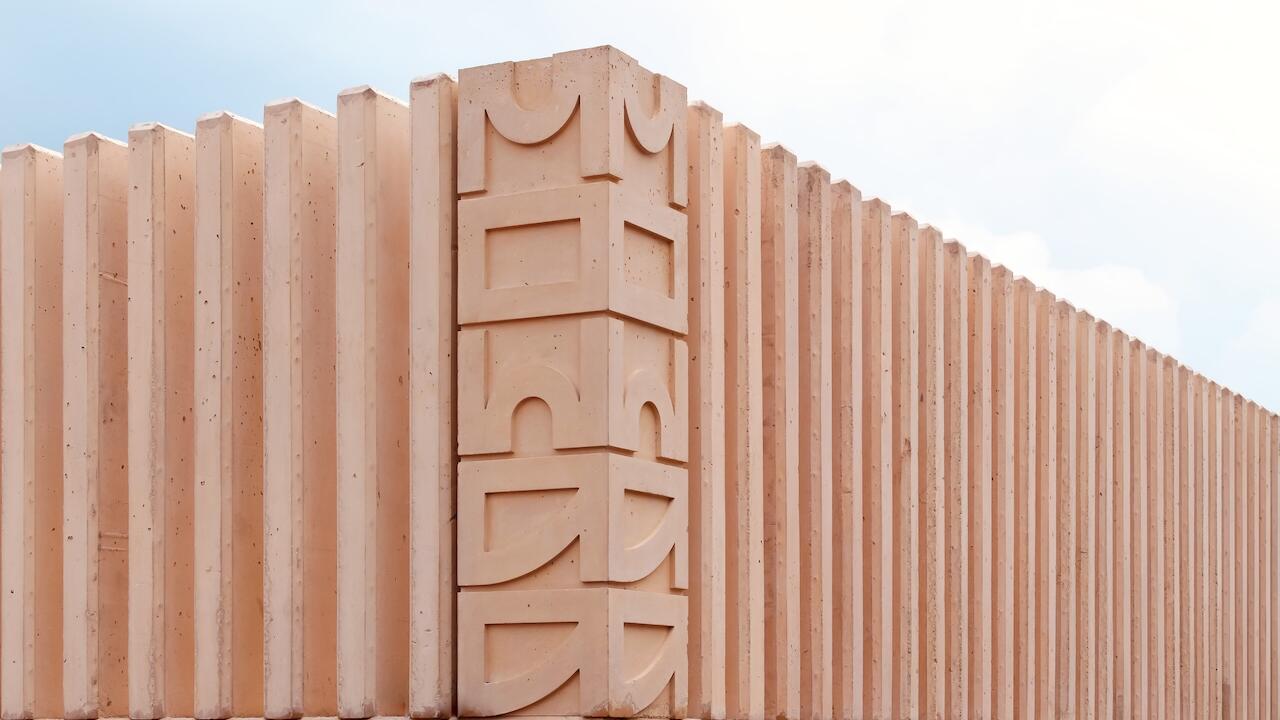Wolfgang Betke
Brandenburgischer Kunstverein
Brandenburgischer Kunstverein

Painting, with its long tradition and only ever partial illusionism, can be seen as a screen filtering as much as revealing its history. Brushmarks occlude as much as they allude; reinvent as much as they revive. One of the functions of Postmodern painting has been to discover technical tropes which not only enact this process but symbolize it. Hence Gerhard Richter’s squeegied abstract paintings, which sometimes resemble a wiped window, converting erasure into transparency; or Michael Krebber’s rollered slabs of paint, qualifying his quizzical brushstrokes as they highlight them. Evenly distributed throughout the Brandenburgischer Kunstverein’s modernistic pavillion, Wolfgang Betke’s double-sided polished aluminium screens propose another variation on this conceit. Composed of two panels, each approximately 2.5 metres high and a little over a metre wide, they are hinged at right angles and supported by wheels. Both sides of each panel have been painted on, although most retain large areas of inflected metal. Betke’s painterly gesturalism appears to skate on the thin ice of surfaces which scarcely retain a flat plane before losing themselves to reflections.
Painting as a functional screen, a decor element, is an over-used conceit but Betke gives the cliché a drastically semi-industrial twist. Despite the wheels and hinges, these objects do not suggest ironical interior design: they are too hefty and architectural. Rather they seem to be attempts to generate a kind of phenomenological vertigo in which painting is unable to establish a stable ground on which to articulate itself. On three of its four sides, the Kunstverein is all windows looking out onto an idyllic, highly-structured park occupying part of an island on Potsdam’s river Havel. Not only does the view tend to overwhelm any object in the space, but the polished aluminium is reflective: a mirror or screen for the light and colour of the landscape. From certain angles and in certain intensities of daylight, the paint is reduced to matt passages on a glossy ground, unreflectivity over shine. Betke puts painting under pressure, makes it vulnerable to circumstantial contingencies. This is a more self-sacrificing kind of site-specificity than the usual extension of painting into sculpture or furniture. It is also the opposite of the finely calibrated lighting of the traditional painting display, which cossets painting into an ideal visibility.
But if the relation between art and site is hostile, the panels have also been devised to assimilate themselves to their context. The pavillion’s window frames, doors and columns are, like the panels, made of aluminium, so the screens take the role of appendages to the architecture. Although the panels are narrowly vertical, the paintings tend to gravitate toward an atomized landscape imagery, forging connections with its leafy foil: a brushstroke extends a branch in the park. The reflecting metal resembles the surface of a still pond. Betke’s painterly approach is to meet these illusionistic grounds head-on with an anarchic, playful idiom. His style is promiscuous, often recalling Albert Oehlen’s radical shifts of register or Laura Owens’s decorative constellations of illustrational ciphers precisely arranged within spectacularly illusionistic spaces. The process is perhaps 40% application, 60% erasure – usually with an industrial sander which simultaneously removes paint and matts the metal to a foggy surface that absorbs light. The matt effect suggests volume or presence in contrast with the polished ground’s absence. Some panels are merely what is left after the sander has been over, leaving only a few scraps of stray paint.
Betke creates instant compositions out of such threadbare surfaces, with a few meandering strokes of a brush, a fragment of collage, or some cartoonish facial features applied with a felt-tip pen. It is as if he had set up a ground for himself which would dramatize his own, indeed any, contemporary painter’s helplessness in the face of a bewilderingly complex cultural context. But his response has been to play the fool, as though a show of frivolity might divert what he was up against. It might have worked, had he not succumbed to his own undoubted virtuosity and been more willing to really flounder. Betke’s recognizable repertoire of technical mannerisms – the remnant of process, the abrupt juxtapositions of register, a decorative formalism giving onto shards of figuration – show him unable to resist his own mastery of the occasion to which he applies himself. He protects his own niche, unwilling to surrender to the helplessness that is the ultimate corrollary of the conditions he so assiduously constructs for himself. He cannot resist attempting to out-spectacle the past, the landscape, the ever-changing light.













